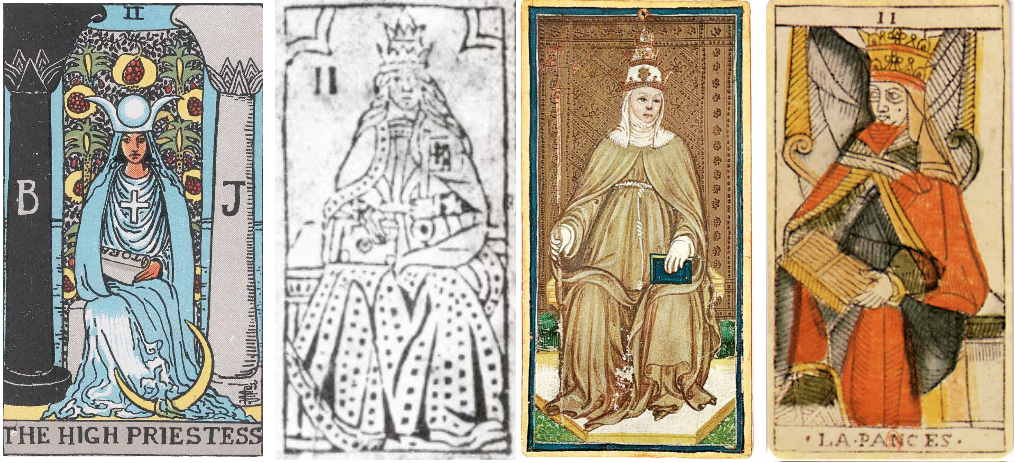Difference between revisions of "Template:Occult.live:Today's featured article"
Occultwiki (talk | contribs) |
Occultwiki (talk | contribs) |
||
| Line 1: | Line 1: | ||
[[File: | [[File:02 The High Priestess.png|250px|left]] | ||
'''[[ | '''[[The High Priestess]]''' is the second card in the [[Major Arcana]] in most traditional [[Tarot]] decks. | ||
This Tarot card was originally called ''La Papesse'', or "The Popess". Some of the cards directly linked the woman on the cards to the papacy by showing the woman wearing a triregnum or Papal Tiara. There are also some modern versions of the [[Tarot of Marseilles]] which include the keys to the kingdom that are a traditional symbol of the papacy. In Protestant post-reformation countries, Tarot cards in particular used images of the legendary Pope Joan, linking in to the mythology of how Joan, disguised as a man, was elected to the papacy and was only supposedly discovered to be a woman when she gave birth. However, Italian Catholics appear to only have seen the ''La Papesse'' as representing the Holy Mother Church in an allegorical form, with the Pope taking office becoming married to the Body of [[Jesus Christ|Christ]], which Catholics refer to in the feminine gender. | |||
'''([[ | '''([[The High Priestess|Full Article...]])''' | ||
Revision as of 09:22, 31 October 2022
The High Priestess is the second card in the Major Arcana in most traditional Tarot decks.
This Tarot card was originally called La Papesse, or "The Popess". Some of the cards directly linked the woman on the cards to the papacy by showing the woman wearing a triregnum or Papal Tiara. There are also some modern versions of the Tarot of Marseilles which include the keys to the kingdom that are a traditional symbol of the papacy. In Protestant post-reformation countries, Tarot cards in particular used images of the legendary Pope Joan, linking in to the mythology of how Joan, disguised as a man, was elected to the papacy and was only supposedly discovered to be a woman when she gave birth. However, Italian Catholics appear to only have seen the La Papesse as representing the Holy Mother Church in an allegorical form, with the Pope taking office becoming married to the Body of Christ, which Catholics refer to in the feminine gender.
